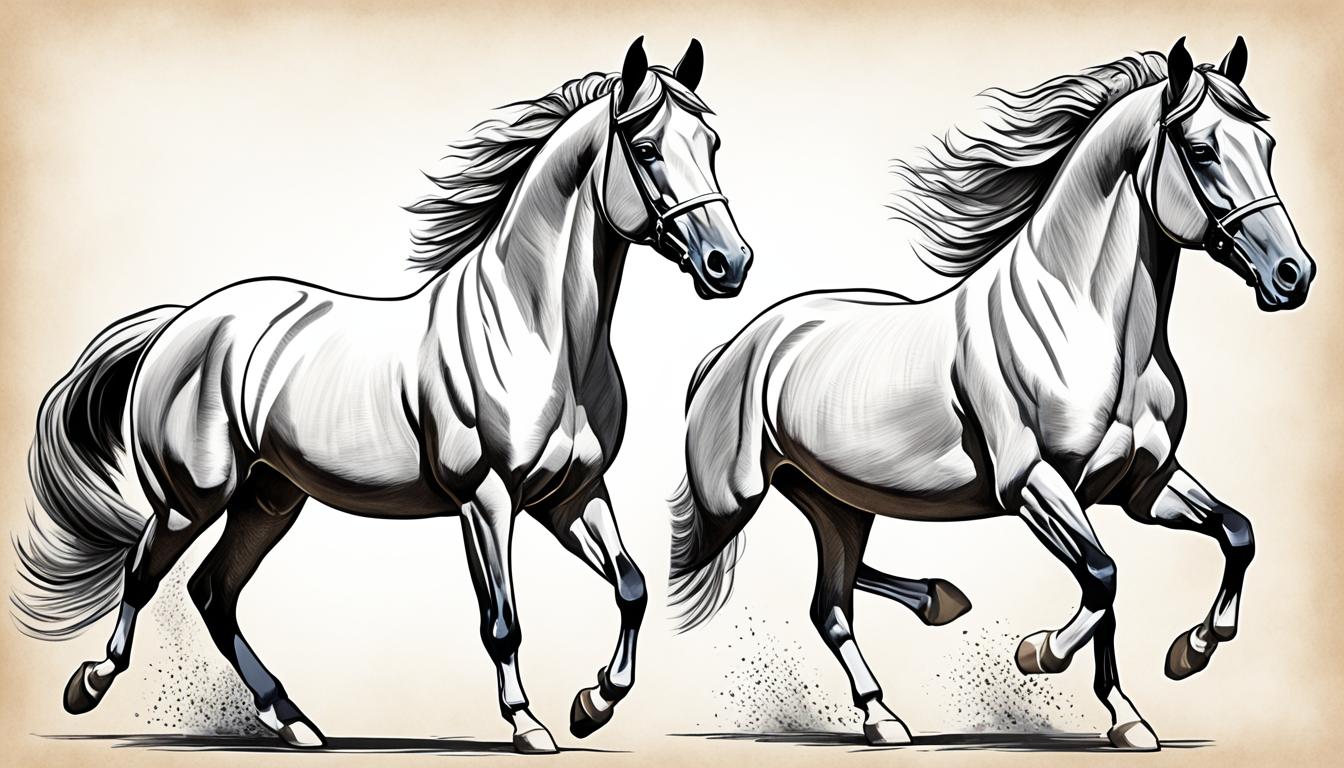In this article, you will learn step-by-step how to draw a horse. Follow along as we guide you through the process of creating a realistic horse drawing. From sketching the basic forms to adding details, this tutorial will help you perfect your horse drawing skills. Whether you’re a beginner or an experienced artist, these easy steps will make it simple for you to create a stunning horse drawing.
Are you ready to unleash your artistic talent and bring horses to life on paper? This horse drawing tutorial will teach you the fundamental techniques needed to capture the grace and beauty of these majestic creatures. So, grab your pencil, paper, and let’s get started on this artistic journey of horse drawing!
How to Draw a Horse?
Getting the Structure through Simple Forms
When it comes to drawing a horse, the first step is to establish the structure through simple shapes. By using circles, ovals, rectangles, and triangles, you can form the basic outline of the horse’s body. This technique serves as a horse sketching guide for beginners, providing a step-by-step horse drawing tutorial to help you create stunning horse illustrations.
The use of basic shapes helps you understand the anatomy of the horse and lays a solid foundation for your drawing. Breaking down the horse into simple forms allows you to capture its proportions and overall shape more easily. Whether you’re a beginner or an experienced artist, this approach ensures that your horse drawing maintains accuracy and realism.
To start, you can use an oval shape to represent the horse’s body. Next, add a smaller circle for the head and elongated ellipses for the legs. Connect these shapes with lines to establish the horse’s pose. Don’t worry about adding details at this stage; focus on getting the overall structure right.
Examples of Simple Forms:
| Shape | Usage |
|---|---|
| Circle | Representing the head or joints |
| Oval | Depicting the body or neck |
| Rectangle | Indicating the back or hooves |
| Triangle | Suggesting the ears or tail |
By utilizing these simple forms, you’ll be able to lay the groundwork for your horse drawing. Remember to consider the proportions and relationships between these shapes to achieve a realistic representation. Once you have established the structure, you can proceed to the next step: sketching the details.
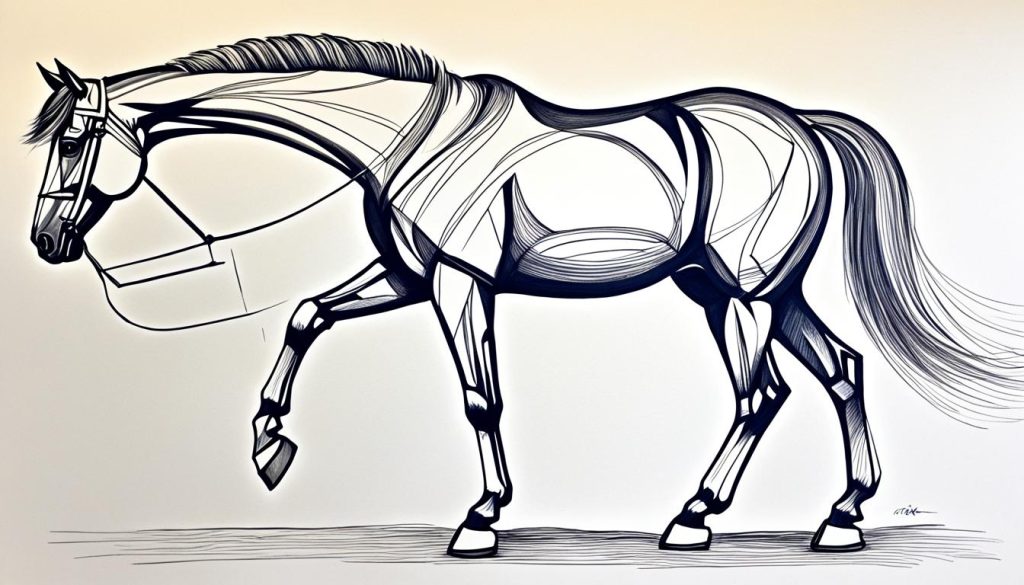
NOTE: Insert the provided image in the center of the text to provide visual guidance and relevance to the topic.
Sketch
Once you have established the structure, it’s time to sketch the horse. Use the basic shapes as a guide and start connecting the lines to create the outline of the horse’s body. Pay attention to the curves and angles, as they will help you capture the unique features of the horse. Use reference images and your own observations to add details to the sketch, such as the horse’s head, legs, and mane. Don’t worry about making it perfect at this stage; the sketch is just a rough guideline for the final drawing.
Sketching is a crucial step in creating a realistic horse drawing. It allows you to experiment with different poses and compositions before committing to the final artwork. Whether you’re aiming for a lifelike representation or a more cartoonish style, the sketching phase is where you lay the foundation for your artwork.
When sketching a horse, it’s important to understand the skeletal structure and proportions. Start by drawing the basic shapes that make up the horse’s body, such as circles for the head and torso, ovals for the legs, and triangles for the ears. These simple shapes will serve as a guide for establishing the overall form and pose of the horse.
As you connect the lines to create the outline of the horse’s body, pay close attention to the curves and angles that define its anatomy. Each horse has unique characteristics, so it’s important to observe reference images or real horses to capture these details accurately. Focus on the placement of features such as the eyes, nostrils, mouth, and ears.
Take your time during the sketching process and don’t be afraid to make adjustments as you go. It’s normal for the initial sketch to look rough and unfinished. Use light, confident strokes to define the main shapes and then gradually add more details. Remember, this stage is all about exploration and experimentation, so allow yourself to be creative and playful with your lines.
Once you’re satisfied with the overall sketch, you can move on to the next step of refining and adding more details to your horse drawing. The sketch serves as a roadmap for your final artwork, guiding you in capturing the essence and character of the horse.
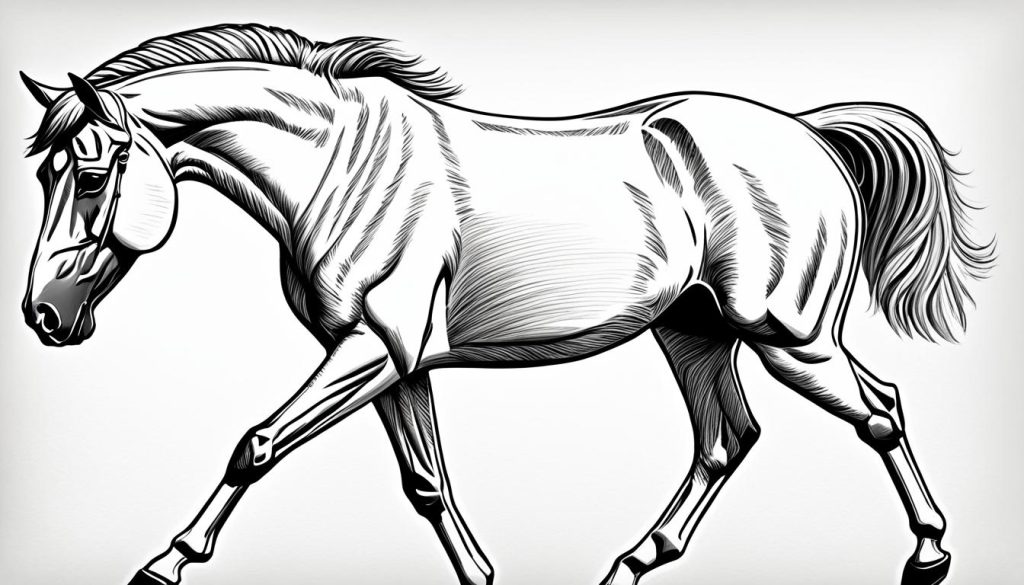
Clean Art
After sketching, it’s time to clean up your work. Lower the opacity of the sketch layer and create a new layer for clean art. Use darker lines to outline the final shape of the horse. This is where you can add more details and refine the drawing. Pay attention to the different textures and patterns on the horse’s body, such as the muscles, hair, and markings. Take your time and be patient, as this step is crucial for creating a realistic and polished horse drawing.
Creating clean art involves enhancing the details and intricacies of your horse drawing, bringing it to life. By using darker lines than the initial sketch, you can define the final shape and features of the horse more prominently. Be sure to observe and capture the unique textures, like the subtle muscles, flowing mane, and intricate markings, that contribute to the horse’s realistic appearance. This stage allows you to refine and perfect your drawing, adding depth and dimension.
Clean art is a vital step in the process of creating a realistic horse drawing. It requires careful observation and attention to detail. By taking the time to refine your sketch and add more intricate elements, you can elevate your drawing to a new level of realism. Remember to use darker lines, pay attention to textures, and take your time to achieve the desired result.
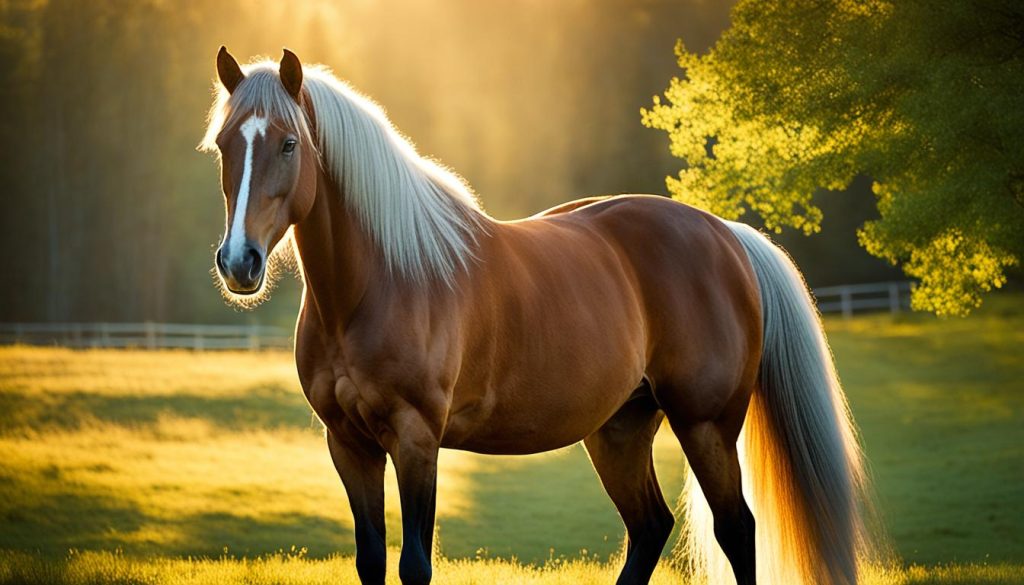
Key Elements to Consider in the Clean Art Stage
| Elements | Description |
|---|---|
| Lines | Use darker lines to outline the final shape and features of the horse |
| Textures | Pay attention to the different textures and patterns on the horse’s body, such as the muscles, hair, and markings |
| Details | Refine the drawing by adding intricate details that contribute to a realistic and polished representation of the horse |
| Observation | Take your time and observe the horse closely to capture its unique characteristics accurately |
Flats
Once you have the clean art, it’s time to add color. Create a new layer for flats and choose a base color for the horse’s fur. Use the paint bucket tool to fill in the areas with the chosen color. Pay attention to the light source and add shading to create depth and dimension. Use different shades of the base color to add highlights and shadows. Take your time to blend the colors and create a realistic rendering of the horse’s body.
Adding color to your horse drawing is an essential step in bringing it to life. By carefully selecting a base color that matches the desired fur tone, you can create a solid foundation for the rest of the coloring process. Use the paint bucket tool to easily fill in the areas of the horse’s body with the base color.
One crucial aspect to consider when adding color is the light source. Determine where the light is coming from in your drawing and apply shading accordingly. Adding shadows on the opposite side of the light source will create depth and dimension, making your horse drawing more realistic.
To enhance the overall appearance of the horse, incorporate highlights and shadows using different shades of the base color. The highlights should be applied on the areas of the body that catch the most light, while shadows should be added to areas in the shadow cast by the horse’s body or other objects nearby.
Blending the different colors together is key to achieving a seamless and natural look. Take your time to carefully blend the shades, ensuring a smooth transition between the different color variations. This will help create a realistic rendering of the horse’s body and fur texture.
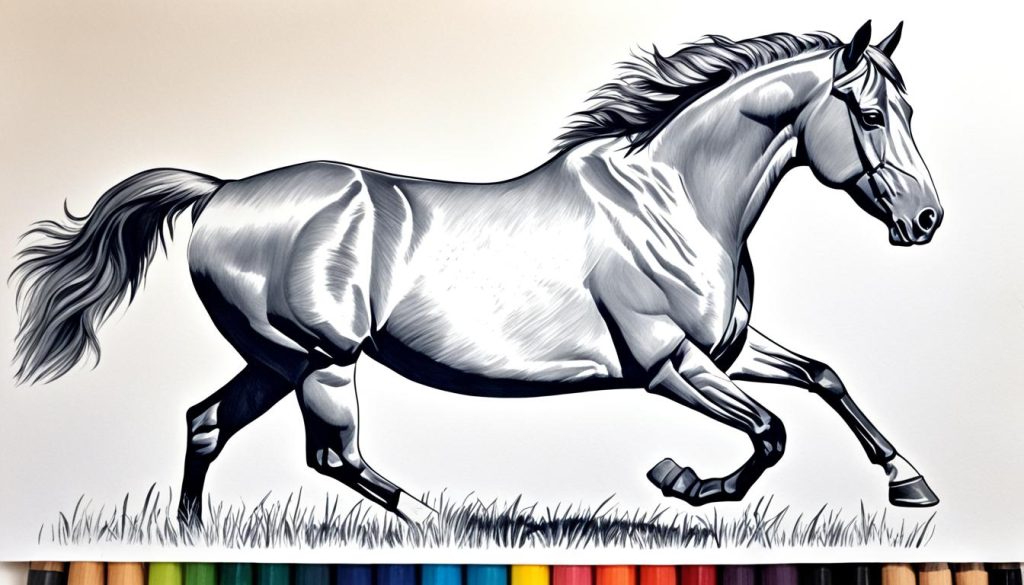
Continue to the next section to learn about the final steps in presenting your horse drawing.
Presentation
Now that you have completed the steps in drawing a horse, it’s time to think about how you want to present your horse illustration. One important aspect of presentation is the background. Create a new layer and use the gradient tool to add a color that complements the tones of the horse. This will add depth and make your drawing pop.
Adding a cast shadow is another crucial element that will give your drawing a sense of weight and realism. Pay attention to the light source and place the shadow accordingly. Be sure to define the shadow’s shape and intensity to create a more convincing effect.
Attention to detail is key. Take a close look at your drawing and ensure that all the elements are well-defined. Refine any lines or features that may need a little extra attention. Lastly, to enhance the overall effect of your drawing, consider adding some finishing touches. For example, a subtle line of light along the horse’s back can give it an extra touch of brilliance.

